Nintendo’s first arcade video games were, to be honest, pretty terrible. Way more interesting were the machines that came before those, starting with 1973’s Laser Clay Shooting System.
The first of seven amusement machines that would be released before 1978’s true video game cabinets, LCSS wasn’t just a pioneer; it could also have spelled disaster for Nintendo’s gaming ambitions were it not for the heroism of a man by the name of Genyo Takeda.
Takeda, who is now head of Nintendo’s Integrated Research and Development team, first joined the company in 1970, straight out of college. Shortly afterwards, he was given the honour (though the significance may not have been known at the time) of being one of Nintendo’s first ever game designers.
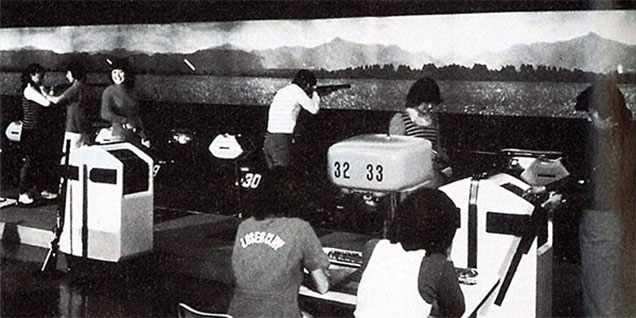
In 1971, Nintendo president Hiroshi Yamauchi asked company legend Gunpei Yokoi to see what could be done about making a simulation based on clay pigeon shooting, which he’d just read about in a newspaper and thought was the bees knees. The company had already been testing a light gun – designed by Masayuki Uemura – so this was seen as a great opportunity to make a commercial venture out of it.
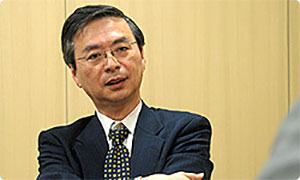
Yamauchi had the idea of installing the shooting galleries in abandoned bowling alleys, of which there were plenty after the sport’s popularity had died out in Japan in recent years. So Nintendo purchased a number of these properties, and Yokoi had Takeda (left) and Uemura help him design a “game” to go along with them.
The idea was to build replica clay shooting ranges, so the team came up with the Laser Clay Shooting System. This consisted of a large woodland mural on the wall, on which images of flying clay pigeons would be displayed via an overhead projector. Customers firing at the pigeons would have their shots registered by a network of reflective surfaces, and if they hit, the projector could switch out and show the image of a destroyed target.
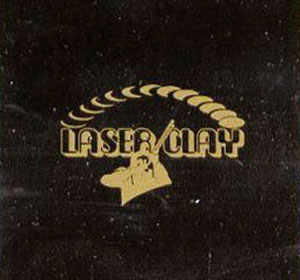
In January 1973, the first Laser Clay Shooting System was ready to open its doors to the public. The customers piled in, the system was fired up and…it broke down. Yet this setback, which could have killed Nintendo’s gaming ambitions before they’d even begun, was overcome when Takeda leapt behind the scenes to save the day.
With the LCSS’s automatic hit-detection and score-tallying systems down, he reportedly managed to both display customer’s “hits” and add up their scores manually, and did this so efficiently nobody noticed there was a man behind the curtain instead of an advanced computer system.
The day went by without further incident, and the LCSS was quickly a hit, to the point where Nintendo were not only opening several new outlets in Japan, but were receiving orders from other countries in Asia as well. The company even found the chops to use famous martial artist and actor Sonny Chiba in advertisements for the LCSS. After years of jumping from business idea to business idea, it seemed like Nintendo had hit paydirt for the first time in a long time: with arcade gaming.
What could (and should) have been a raging success for Nintendo, however, quickly turned into a disaster. Only a few months later, the oil crisis of 1973 hit, and it hit Japan especially hard, as the island nation imports nearly all of its oil from outside sources. Having borrowed large sums of money to expand the LCSS business, and building machines for numerous new facilities, when the crisis hit most of these orders were cancelled, leaving Nintendo in the hole to the tune of around ¥5,000,000,000 (around USD$64 million).
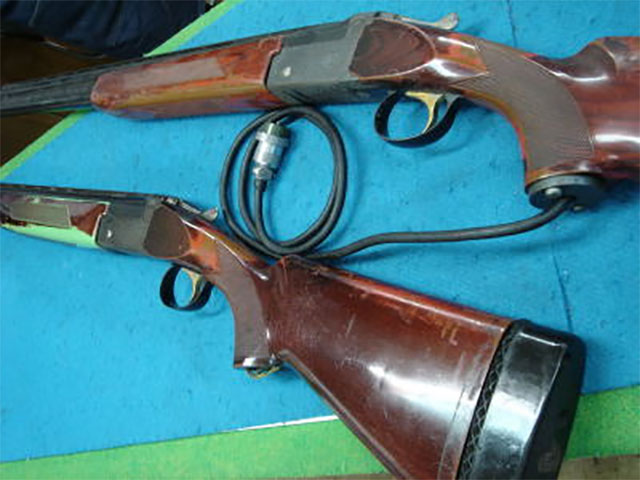
It took Nintendo seven years to pay off that debt, the company kept alive only by the continued faith and generosity of its shareholders and some quick-fire successes in the arcade and home video game business.
So what became of the Laser Clay Shooting System? Well, to cut costs Yokoi had the concept miniaturised and released for the home market. Duck Hunt, the famous NES game, actually began life as one of these home units.
As for the two men behind it, Takeda is credited as being Nintendo’s first ever video game designer, for his work on the company’s earliest arcade machines. He later went on to direct and/or produce Nintendo classics like Punch-Out and PilotWings 64. He also led the team which came up the original Zelda’s revolutionary back-up battery, invented the analogue stick on the Nintendo 64 controller and, perhaps most importantly, has headed up the hardware design of both the GameCube and Wii.
Uemura, meanwhile, has had an equally important career with the company, having led the team which developed the Famicom and Nintendo Entertainment System (as well as the NES Zapper, drawing on his work with the LCSS). He was also the head designer of the Super Nintendo before retiring in 2004.
Picture: Nintendo.wikia
Total Recall is a look back at the history of video games through their characters, franchises, developers and trends. You can find more stories like this one here.
This story was originally published in April 2011.
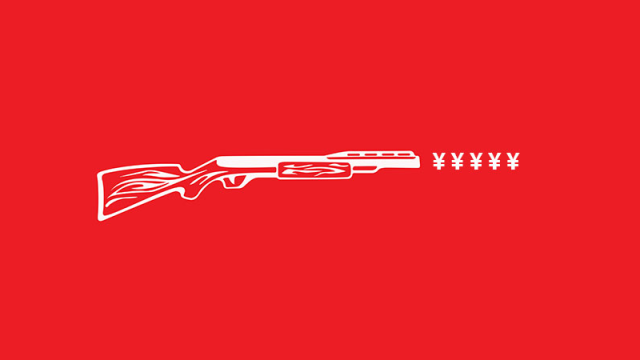
Comments
6 responses to “The Gun Game That Nearly Broke Nintendo”
That’s the lifeblood of Nintendo right there.
Trying the strange, the weird, the new. Sometimes it hits, sometimes it misses, but they keep on experimenting.
It sort of goes full circle:
Playing the Wii in a Movie Theater: http://youtu.be/lzfJUHVrWhs
Nintendo are DOOOOOOOMMMMMMEEEEEDDDDDD!
Noooo…
Face it. In this modern age of the 1970’s they need to shape up or not be around by 1980.
I know what can save them. Roller Disco. Honestly, roller skates…..disco, bring them together! This is going to be the biggest hit of next year. 1979 will be the year of Roller Disco and then it will live forever!
” installing the shooting galleries in abandoned bowling alleys, of which there were plenty after the sport’s popularity had died out in Japan”
So that’s why the Joker’s hideout in Akira was an abandoned bowling alley?
Huh.